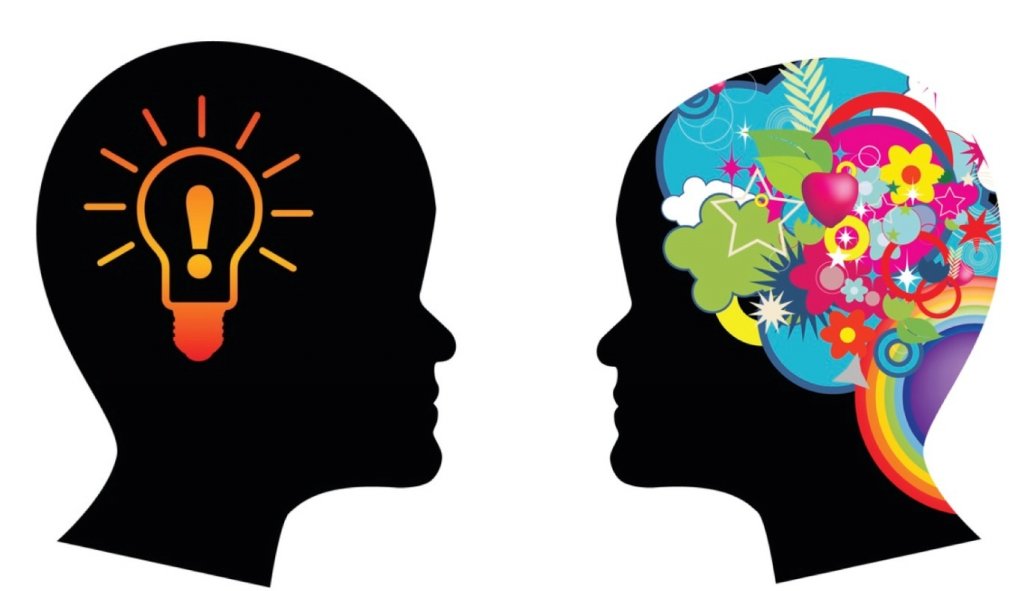How Do We Relate to Cultures Different from Our Own?

There tends to be very little talk about cultural intelligence and a lot about emotional intelligence. This is considered the ability to perceive, assimilate, comprehend, and regulate one’s own emotions and those of others, promoting emotional and intellectual growth. Using this information, we interpret the world that surrounds us, which determines our way of thinking and behaving.
Great importance is generally given to the relationships between people, but when the relationships are established between people from different cultures, we have to keep another kind of intelligence in mind: cultural intelligence.
Cultural intelligence
But what is cultural intelligence? It is nothing more than the ability to adapt when interacting with people from another culture. For example, when we travel to countries that speak different languages, we want them to adapt their language so that we can understand it. Do you do the same?

Components of cultural intelligence
Cultural intelligence is made up of four parts: a motivational part, a cognitive part, a metacognitive part, and finally, a behavioral part.
- The motivational component emphasizes the intrinsic interest in experiencing other cultures and interacting with different people. That desire to know and understand different things.
- As for the cognitive component, it includes the knowledge of norms in other cultures. Do you know the economic and legal systems present in other cultures? Do you know how to behave with people from other cultures, according to their social norms?
- The metacognitive component is the one that refers to transcultural awareness. Understanding cultural aspects when people make judgments about their thoughts and those of others. In short, understanding other people’s ideas from their culture’s point of view.
- Finally, the behavioral component refers to the ability to speak and gesture correctly according to the norms of other cultures. Who hasn’t ever had problems asking for two beers in Spain? It is necessary for us to ask ourselves how much we know about other cultures. Do you know another language? Do you know the rituals involved in other religious practices? What gesture do they use to say “ok”? On the other hand, are we capable of adapting our language when we speak to someone from another culture? Do we respect their actions? Can we find similarities between our cultures?
“When I let go of what I am, I become what I might be.”
-Lao-Tse-

Maybe in this era characterized by globalization, in addition to insisting on the development of our emotional intelligence, we should add an emphasis on learning cultural intelligence. In this way, we could end up better understanding other cultures and, at the end of the day, getting to know ourselves better because knowing another is nothing more than getting to know ourselves.
“He who doesn’t understand a look also will not understand a long explanation.”
-Arab Proverb-
Cultural intelligence in Afghanistan
What would you think if someone were to kick the door of your house? This would be an annoying behavior, but maybe not as much as it would be for the inhabitants of Afghanistan, who see this gesture as much more than an insult.
A situation that shed light on cultural differences and led cultural intelligence to start being considered by the army was the war in Afghanistan.
A constant gesture of soldiers and one that was very badly received by the inhabitants of Afghanistan was for them to let dogs into their houses. In the United States, this may not be an issue at all or it may be a big one, depending on the person, but if instead of a dog it were a pig that they sent through your house, certainly this would cause greater concern.
At first, the American soldiers were not aware that dogs were looked down upon and not to be considered pets, which is why they let them into people’s houses.
“A dog is a dog unless he is facing you; then he is Mr. Dog.”
-Arab Proverb-
These two behaviors, considered among many other differences that were taking place at the time, are examples of how the same behavior is not perceived in the same way by people of two different cultures. Luckily, General David Petraeus, in charge of the troops at that time, realized the faults in the men he had in charge concerning emotional intelligence and was able to compensate for them.
There tends to be very little talk about cultural intelligence and a lot about emotional intelligence. This is considered the ability to perceive, assimilate, comprehend, and regulate one’s own emotions and those of others, promoting emotional and intellectual growth. Using this information, we interpret the world that surrounds us, which determines our way of thinking and behaving.
Great importance is generally given to the relationships between people, but when the relationships are established between people from different cultures, we have to keep another kind of intelligence in mind: cultural intelligence.
Cultural intelligence
But what is cultural intelligence? It is nothing more than the ability to adapt when interacting with people from another culture. For example, when we travel to countries that speak different languages, we want them to adapt their language so that we can understand it. Do you do the same?

Components of cultural intelligence
Cultural intelligence is made up of four parts: a motivational part, a cognitive part, a metacognitive part, and finally, a behavioral part.
- The motivational component emphasizes the intrinsic interest in experiencing other cultures and interacting with different people. That desire to know and understand different things.
- As for the cognitive component, it includes the knowledge of norms in other cultures. Do you know the economic and legal systems present in other cultures? Do you know how to behave with people from other cultures, according to their social norms?
- The metacognitive component is the one that refers to transcultural awareness. Understanding cultural aspects when people make judgments about their thoughts and those of others. In short, understanding other people’s ideas from their culture’s point of view.
- Finally, the behavioral component refers to the ability to speak and gesture correctly according to the norms of other cultures. Who hasn’t ever had problems asking for two beers in Spain? It is necessary for us to ask ourselves how much we know about other cultures. Do you know another language? Do you know the rituals involved in other religious practices? What gesture do they use to say “ok”? On the other hand, are we capable of adapting our language when we speak to someone from another culture? Do we respect their actions? Can we find similarities between our cultures?
“When I let go of what I am, I become what I might be.”
-Lao-Tse-

Maybe in this era characterized by globalization, in addition to insisting on the development of our emotional intelligence, we should add an emphasis on learning cultural intelligence. In this way, we could end up better understanding other cultures and, at the end of the day, getting to know ourselves better because knowing another is nothing more than getting to know ourselves.
“He who doesn’t understand a look also will not understand a long explanation.”
-Arab Proverb-
Cultural intelligence in Afghanistan
What would you think if someone were to kick the door of your house? This would be an annoying behavior, but maybe not as much as it would be for the inhabitants of Afghanistan, who see this gesture as much more than an insult.
A situation that shed light on cultural differences and led cultural intelligence to start being considered by the army was the war in Afghanistan.
A constant gesture of soldiers and one that was very badly received by the inhabitants of Afghanistan was for them to let dogs into their houses. In the United States, this may not be an issue at all or it may be a big one, depending on the person, but if instead of a dog it were a pig that they sent through your house, certainly this would cause greater concern.
At first, the American soldiers were not aware that dogs were looked down upon and not to be considered pets, which is why they let them into people’s houses.
“A dog is a dog unless he is facing you; then he is Mr. Dog.”
-Arab Proverb-
These two behaviors, considered among many other differences that were taking place at the time, are examples of how the same behavior is not perceived in the same way by people of two different cultures. Luckily, General David Petraeus, in charge of the troops at that time, realized the faults in the men he had in charge concerning emotional intelligence and was able to compensate for them.
This text is provided for informational purposes only and does not replace consultation with a professional. If in doubt, consult your specialist.







